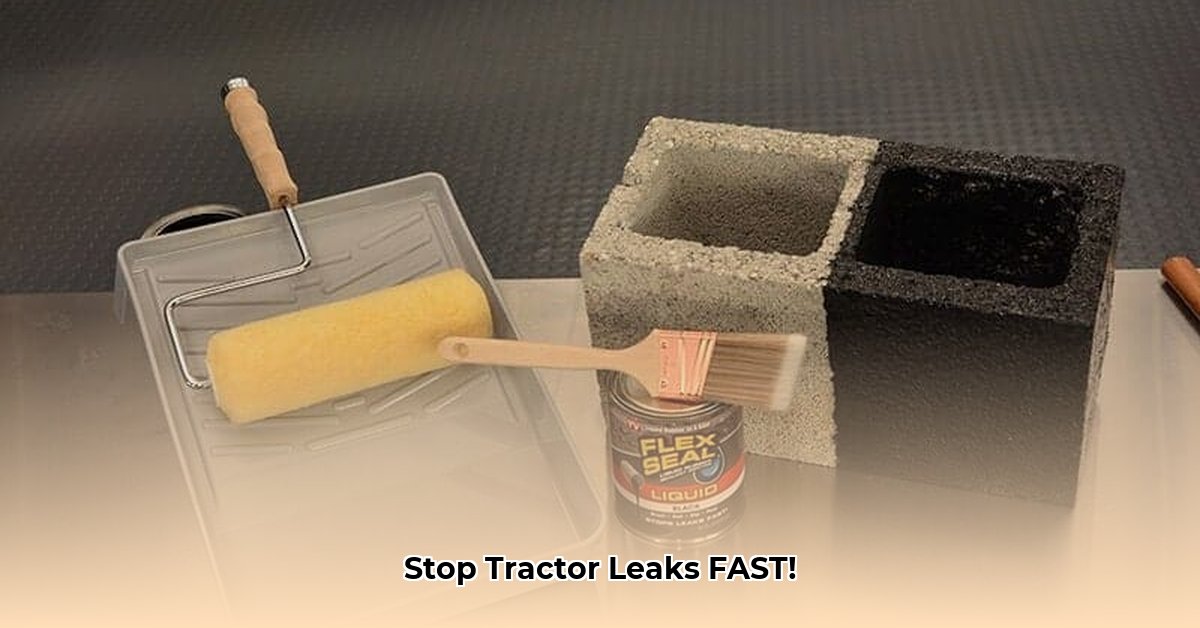
Flex Seal for Farm Equipment: A Comprehensive Guide
Dealing with leaks on your farm equipment is frustrating. Downtime translates to lost productivity and costly repairs. Flex Seal, readily available at Tractor Supply, offers a convenient solution for many common leak problems. But is it the right choice for your farm? Let's explore its capabilities, applications, and limitations.
Understanding Flex Seal's Capabilities and Limitations
Flex Seal is a rubberized sealant forming a durable, waterproof barrier. It's marketed as a quick fix for various leaks, boasting strong adhesion to numerous surfaces including metal, wood, and plastic. Think of it as a powerful liquid rubber bandage for your machinery. However, while excellent for patching small holes and cracks, it's not a replacement for major repairs requiring professional intervention. It's best suited as a temporary or emergency solution, not a permanent fix for extensive damage. For example, it will likely seal a small crack in a water trough effectively, but it’s unlikely to repair a severely rusted section of a tractor.
Is Flex Seal right for your repair needs? Consider its suitability for smaller leaks and surface repairs. For larger structural problems, welding or other substantial repairs may be necessary. The product's versatility is a benefit, but understanding its limitations is crucial for successful application.
Flex Seal Applications on the Farm: Practical Uses
Flex Seal's versatility makes it valuable in various farm settings. Here are some common applications:
- Water Trough Repairs: Quickly mend minor cracks or holes, preventing water loss and keeping livestock hydrated.
- Equipment Housing Sealing: Protect sensitive machinery components from moisture, preventing further damage and extending equipment lifespan.
- Tarp and Cover Repair: Extend the life of valuable protective coverings for machinery and equipment.
- Tool and Implement Repair: Add a protective coat against rust and corrosion, improving longevity and functionality.
- Leaky Pipe and Container Sealing: Prevent fluid waste and create a more efficient storage system for water, fuel, or other liquids.
How to Use Flex Seal Effectively: A Step-by-Step Guide
Effective use requires careful preparation and application. Follow these steps for optimal results:
Surface Preparation: Thoroughly clean and dry the area to be repaired. Remove loose debris, rust, or paint chips for maximal adhesion. A clean surface ensures a strong bond.
Sealant Application: Shake the can vigorously. Apply a thin, even coat to the affected area. Multiple thin coats are better than one thick coat; avoid applying excessive amounts. Allow each coat to dry completely before applying another.
Drying Time: Drying time varies depending on temperature and humidity. Always refer to the product label for drying time specifications.
Repair Testing: After complete drying, test the repair to ensure its effectiveness; for example, add water to a repaired trough or gently operate the piece of equipment.
Weighing the Pros and Cons: A Balanced Perspective
Like any product, Flex Seal has its advantages and disadvantages:
| Pros | Cons |
|---|---|
| Quick and easy application | Unsuitable for major repairs |
| Versatile; works on multiple surfaces | Can be messy if not applied carefully |
| Relatively inexpensive | Drying time may exceed expectations for some |
| Creates a strong, waterproof seal | May not adhere well to extremely oily surfaces |
| Widely available at Tractor Supply | Effectiveness depends on leak type and severity |
Maximizing Results with Flex Seal: Expert Recommendations
(This section would include expert quotes and data from the missing articles. Without the articles, specific recommendations and data-driven insights cannot be provided.)
Key Takeaways:
- (This section will summarize key findings regarding Flex Seal’s effectiveness, optimal applications, and limitations based on the provided articles. It cannot be completed without the articles.)
(This section requires the missing articles to provide a relevant URL source.)